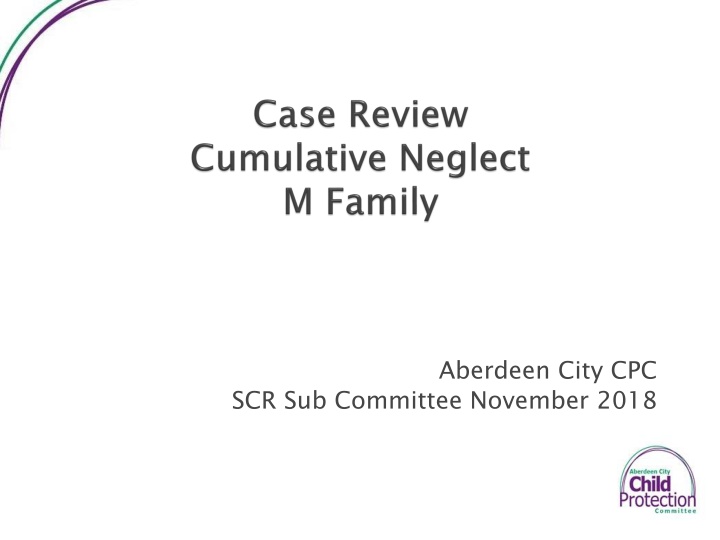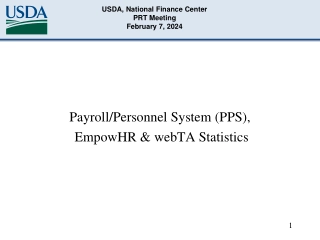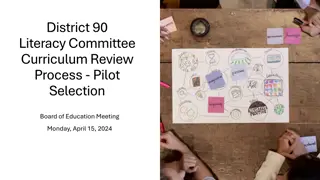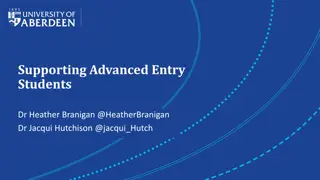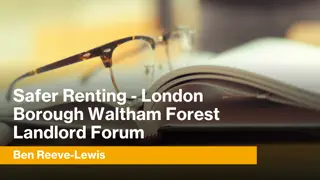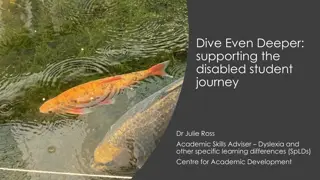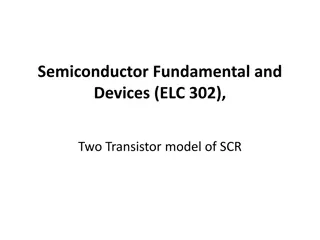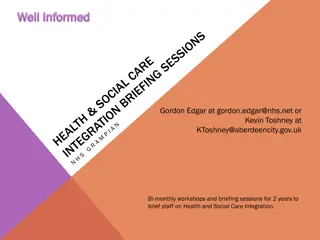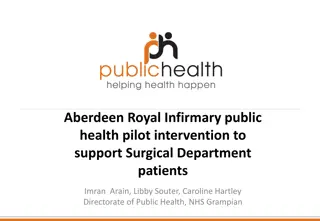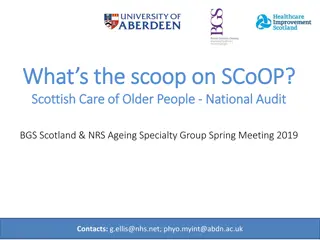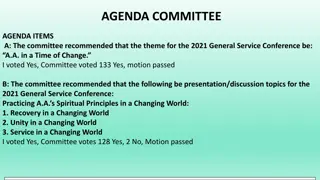Aberdeen City CPC SCR Sub-Committee Review November 2018
In November 2018, the Aberdeen City CPC SCR Sub-Committee conducted a review on a case, focusing on key features, emerging themes, and future actions. Responsibility for carrying out reviews lies with Child Protection Committees and Chief Officers Groups, following national guidelines. The review process is vital for continuous improvement, learning, and reflection on professional practices. Significant Case Reviews and Initial Case Reviews are undertaken in specific circumstances to address professional concerns and enhance existing quality assurance processes.
Download Presentation

Please find below an Image/Link to download the presentation.
The content on the website is provided AS IS for your information and personal use only. It may not be sold, licensed, or shared on other websites without obtaining consent from the author.If you encounter any issues during the download, it is possible that the publisher has removed the file from their server.
You are allowed to download the files provided on this website for personal or commercial use, subject to the condition that they are used lawfully. All files are the property of their respective owners.
The content on the website is provided AS IS for your information and personal use only. It may not be sold, licensed, or shared on other websites without obtaining consent from the author.
E N D
Presentation Transcript
Aberdeen City CPC SCR Sub Committee November 2018
How we went about the case review How this case came to our attention and key features of this case What are the emerging themes What are we doing about this now and in future
How we went about the case review Kymme Fraser Child Protection Programme Development Manager Aberdeen City Child Protection Committee
Responsibility for carrying out an SCR or ICR lies with Child Protection Committees and Chief Officers Groups. National guidance applies .
When a child dies The incident, or accumulation of incidents, gives rise to significant concerns about professional service involvement (or lack of involvement) AND where one of the following apply: Abuse or neglect is a suspected factor The child is on, or has been on, the CPR. The death is by suicide or accidental death; The death is by alleged murder, culpable homicide, reckless conduct, or act of violence; The child was looked after/receiving aftercare support.
When a child has not died The child has sustained significant harm or a risk of significant harm and The incident, or accumulation of incidents, gives rise to serious concerns about professional and/or service involvement (or lack of involvement) and The relevant CP Committee determines that there may be learning to be gained through conducting a SCR.
Significant Case Reviews and Initial Case Reviews should be seen in the context of a culture of continuous improvement with a focus on learning and reflection on day-to-day practices, and the systems within which those practices operate. National Guidance recognises that requests for a SCR should be those rare cases where significant professional concerns exist. They do not replace existing QA processes.
Notification received from Police Scotland Single Agency information and documents submitted SCR Sub Committee consider information submitted along with a multi agency chronology Learning clearly emerges through Initial Case Review process (so no need for further SCR process) Protected group discussion with staff Full report prepared with recommendations CPC, Chief Officers, Care Inspectorate intimated
How this case came to our attention and key features of this case DCI Colin Morrans Police Scotland
Detective Chief Inspector Colin Morrans Detective Chief Inspector Colin Morrans
Dad Mum A C B D Aged 6 Aged 2 Aged 4 Unborn
In October 2017, Child B presented at Nursery with fingertip bruising to arms, forehead and back Education referred to Social Work and Child Protection processes were instigated. IRD held and joint decision taken regarding the requirement for medical examination. Child B s general appearance and wellbeing caused medical staff concern. Child B was noted as very pale and thin, with parts of body seen to be filthy .
Home visit by Police and SW found the house to be in a condition described as dire unsafe and unsuitable for human habitation litter piled up in every room doors barricaded with rubbish and dirty clothing living room covered in rubbish and broken plaster most of the doors within the property had holes in them no food in the fridge. Medical Examinations of Child A and Child C found them: Malnourished Underdeveloped Filthy Teeth had significant decay Children removed from Household
Immediate concerns identified on 11/10/2017 when Child B presented at nursery with bruising. Considerable neglect believed to have contributed to risk of significant harm. Neglect amounted to: Uninhabitable living conditions Inability of parents to ensure the wellbeing of their children Mental health concerns - both parents
What are the emerging themes? Fiona Miele Lead Nurse Child Protection NHS Grampian
We all understand that People come to work to do a good job Systems are complex The ICR process is about learning not blame
Cumulative Neglect Disguised Non-compliance Assessment, Planning and Professional Curiosity Multi-agency interface and transitions
Neglect is the persistent failure to meet a child's basic physical and/or psychological needs, likely to result in the serious impairment of the child's health or development
FAILURE OF NOT RECOGNISING CUMULATIVE NEGLECT Threshold for intervention P H Y S I C A L S E X U A L A B U S E A B U S E N E G L E C T N E G L E C T N E G L E C T N E G L E C T
CUMULATIVE EFFECT Threshold for intervention N E G L E C T P H Y S I C A L S E X U A L N E G L E C T A B U S E A B U S E N E G L E C T
Fears about being considered judgemental A focus on the parent rather than the child Failure to consider the child s lived experience or understand the child s world A fixed view of the family Parent s superficial or false compliance Not my area of expertise Reluctance to refer (Brandon et al 2014)
Filtering out or minimising negative information Changing behaviour to avoid conflict Collusion Filtering out information for multi-agency colleagues Rule of optimism Avoiding difficult conversations
What does this mean for the child? What does my assessment tell me?
8 significant missed opportunites for multi-agency intervention
What are we doing about this now and in future Graeme Simpson Chief Officer Integrated Children & Family Services and CSWO
Next Steps Graeme Simpson Chief Officer/CSWO
Not to proceed to SCR Clear learning for all agencies to take on board. Need for single agencies to examine processes. Need for agencies to work together
Better appreciation of cumulative neglect and its impact on children. Improve sharing of information between Named Persons in Health and Education GIRFEC processes chronologies Encourage enhanced professional curiosity Suspend belief on information provided by parents when assessing care and protection concerns Review practice relating to missed appointments Ensure systems are in place to flag concerns
Learning and Development Multi agency focus on Cumulative Neglect 3 October 2018/28 November 2018/16 January 2019 Follow up QA activity - Impact of learning and changes to practice. Reporting back to CPC and COG Single Agency/Multi Agency
